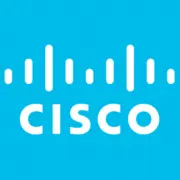Cisco AnyConnect, You know it will work
Overall Satisfaction with Cisco AnyConnect
We use Cisco Duo for MFA while connecting into the VPN to ensure that our logins are authenticated against a second Factor and to limit where in the world our logins are allowed from. We also plan on rolling out the ability to force our users to use the Cisco Duo to Log into their terminal servers and, eventually local laptops. This will ensure that our login processes are known to be valid without our IT Team having to jump through hoops and pull some crazy Mac Address or IP address filtering process with constant updates due to private non commercial Internet Service Providers giving our users non-static IPs.
Pros
- Multi Factor Authentication
- Integration with Cisco ASA Firewalls
- Integration with Cisco AnyConnect VPN
- Easy Enrollment Processes for Users
Cons
- Manual Administrative Config: The Enrollment requires the user to enroll from their end and can't just be "Setup" for the user unless you act as the user. For things like SMS text, it would be nice just to put it in place and have it work without a "Setup/Enrollment" process. This does, however ensure the user understands the process.
- Active Directory Sync and Azure Sync Did not automatically match up accounts and duplicate, so I had to do it manually, to be fair the account usernames do not match the Email Address which is used for Azure so it would be difficult.
- Duo Support and Cisco Support seem to have not been integrated with each other well, most support tickets end up with a Duo expert and a Cisco Firewall Expert on at the same time, though this has improved dramatically.
- They did not force my Admin to use an NTP Server off the bat, which would have fixed a few issues we had that persisted for a while until he started using one. (A bit old fashioned)
- During Covid, we had everything setup to completely handle the new WFH environments resulting in minimal issues during the transition.
- Since all of our users have laptops they are able to use unoccupied offices to connect to docks, then connect to the Cisco AnyConnect VPN, and Work Anywhere.
- Cisco AnyConnect allows our users to be more flexible in thier hours when appropriate since they can remote into the office at night to do maintenance and run server intensive reports and batch mods when nobody is accessing the system.
- Cisco AnyConnect allows us to have a new 100% WFH type of employee accommodating the new world we find ourselves in and expanding our hiring potential beyond our physical office locations.
We have benefitted because when a user uses Cisco AnyConnect a secure tunnel is created. We even have set it up so that when they connect to the Cisco AnyConnect, the local LAN at the user's location is disabled so we don't have any devices piggybacking off of the user laptops to get into our systems and do anything malicious. Combined with how stable it is and how easy it is to use (even for non-technical people) once it is setup, we have benefitted greatly from the increased usability of our systems.
While other VPN products functionally work, we kept Cisco AnyConnect due to its stability and our ability to control how our users use it. Since we have a Cisco Network it was an obvious choice that we stand behind. While we have other options as backup the primary VPN will pretty much always be Cisco AnyConnect.
Do you think Cisco AnyConnect delivers good value for the price?
Yes
Are you happy with Cisco AnyConnect's feature set?
Yes
Did Cisco AnyConnect live up to sales and marketing promises?
Yes
Did implementation of Cisco AnyConnect go as expected?
Yes
Would you buy Cisco AnyConnect again?
Yes
Resilience and Reliability
With the combination of an MFA factor, you can resist the most common type of credential leak by ensuring your users are locked down to a specific device/location via policy. Cisco AnyConnect offers resistance by making the tunnel between your employee and your network secure, you can then go ahead and use an ISE, Duo or Okta to confirm the identity of your user before connection.
Ensure that you are using software that is updated by the organization that developed it. One that doesn't have frequent vulnerabilities and is easy to maintain. Ensure that you train your employees on the use of secure programs. Take care of the end and ensure you are doing your updates for all of your tools. Finally, choose Cisco for your networking because they check off all the boxes.




Comments
Please log in to join the conversation